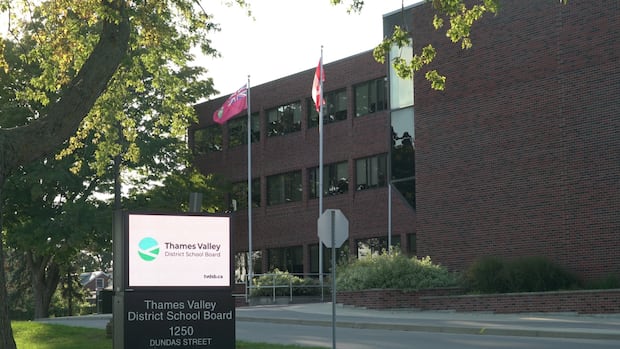The provincial government’s takeover of the Thames Valley District School Board last month marked an unprecedented step in Ontario’s education governance. Now, we’re seeing the first concrete results of that intervention, with a budget plan that reveals both immediate fixes and lingering questions about local democratic control.
As I walked through London’s Masonville Public School last week, Principal Karen Smith showed me empty storage rooms that should have been classroom spaces. “We’ve been managing with what we have,” she told me, gesturing to the overcrowded hallways where students navigate between periods. “But it’s been years of making do with less.”
This “making do” mentality has defined many Ontario school boards caught between provincial funding formulas and local needs. Thames Valley’s situation became the breaking point when the Ministry of Education determined the board couldn’t balance its books without outside intervention.
The newly appointed provincial supervisor, Bruce Rodrigues, unveiled a $1.2 billion operating budget last week that eliminates the projected $11.2 million deficit through a combination of staffing reductions and program adjustments. The plan reduces 92 teaching positions and 36 educational assistant roles while aiming to maintain frontline classroom supports.
“This is about sustainable solutions, not just quick fixes,” Rodrigues said during the budget announcement, where I noticed several former trustees watching from the back of the room, their expressions revealing a complex mix of concern and resignation.
The Ontario government justified its takeover through the Education Act provisions allowing provincial intervention when boards cannot balance their budgets. Education Minister Stephen Lecce characterized the move as necessary fiscal discipline rather than political overreach.
“When boards consistently run deficits, it’s Ontario’s students who ultimately pay the price,” Lecce said in a statement provided to Mediawall.news. “The ministry’s responsibility is ensuring taxpayer dollars directly benefit student achievement.”
However, former Thames Valley trustee Corrine Rahman sees the situation differently. “We weren’t facing a financial crisis because of mismanagement,” she explained during our conversation at a local coffee shop. “We were struggling with a funding model that doesn’t account for our specific regional challenges – mental health needs, rural transportation costs, and growing newcomer populations.”
The numbers support Rahman’s assessment. The Financial Accountability Office of Ontario reported last year that per-pupil funding has decreased by approximately 2.7% in real terms since 2018, despite inflation and increasing special education requirements. Thames Valley serves over 82,000 students across urban London and surrounding rural communities – a diverse population with equally diverse needs.
Community reaction to the takeover has been mixed. The Ontario Secondary School Teachers’ Federation expressed concern about the precedent being set. “This removes democratically elected representatives without addressing the structural funding problems,” said Karen Littlewood, OSSTF president, during a press conference.
Meanwhile, some parents see potential benefits. “If this means more stability in programming and maybe smaller class sizes eventually, I’m cautiously optimistic,” said Marco Teixeira, parent of two elementary students, who I met at a recent school council meeting. “But I worry about who’s really making decisions about my kids’ education now.”
The Thames Valley situation isn’t happening in isolation. Four other Ontario school boards currently operate under varying degrees of provincial supervision. Education policy experts note this represents a significant trend toward centralized control.
“We’re witnessing a fundamental shift in education governance,” explains Dr. Nina Davidson, education policy researcher at Western University. “The province is increasingly willing to override local democratic structures in the name of fiscal responsibility, but the long-term implications for community responsiveness remain unclear.”
Davidson points out that provincial interventions typically focus on financial metrics rather than educational outcomes. “The real question is whether standardized financial oversight actually produces better learning environments for students with diverse needs.”
The new budget does preserve some priority programs, including specialized mental health supports and targeted literacy interventions. However, class sizes will increase slightly in grades 4-8, and some enrichment programs face reductions.
For students like 16-year-old Amina Hassan, these decisions have real consequences. “Last year, I had a specialized math tutor through an after-school program that helped me go from failing to a B+,” she told me during a student council meeting at her high school. “Now they’re saying that program might be cut. What happens to kids like me next year?”
The Thames Valley takeover represents a critical moment in Ontario’s education landscape – one that tests the boundaries between provincial oversight and local governance. The Ministry of Education maintains that balanced budgets create sustainable school systems, while critics argue that standardized financial metrics fail to account for community-specific educational needs.
As provincial supervisor Rodrigues implements the new budget framework over the coming year, the true measure of success won’t be found solely in financial statements. It will emerge in classrooms across London and surrounding communities, where teachers and students navigate the practical realities of these top-down decisions.
Whatever the outcome, Thames Valley’s experience signals a significant evolution in how Ontario manages education governance – one that other school boards across the province are watching with intense interest, knowing they could be next.






